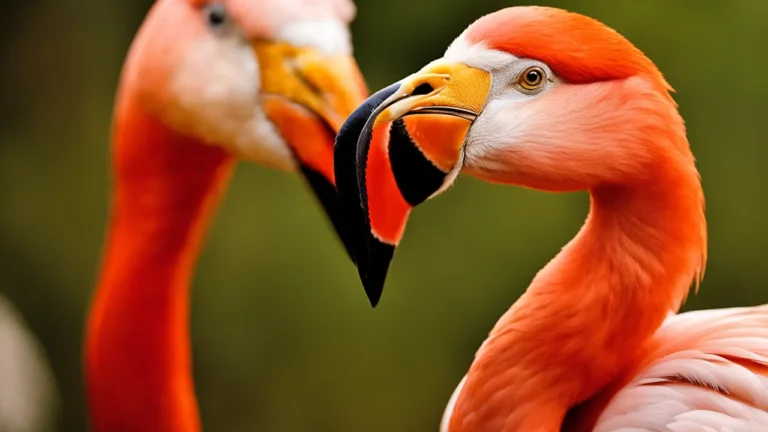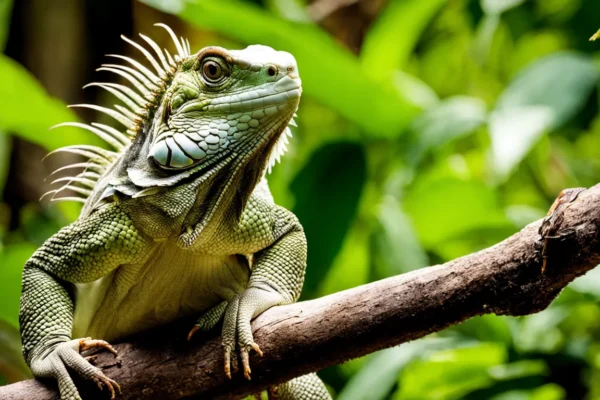A common belief is that a bird’s beak is what makes them unique. However, do all species of bird have a real anatomical beak? The solution is more complex than it would initially seem, as is the case with many biological issues.
This is a simple response in case you’re pressed for time: Except for flamingos and some extinct bird species, the great majority of birds have beaks coated with keratin.
This thorough guide will look at the variety of physical features that birds employ to hold and swallow food, including the variations in beaks, bills, and other special adaptations.
What Makes a Beak of a Bird?
One distinctive feature that sets birds apart from other animal species is their avian beak. The beak is used for a variety of tasks, including eating, grooming, item manipulation, and even displays of lust.
Over millions of years, this unique structure has developed to meet the unique requirements of many bird species. Let’s examine more closely at the salient characteristics of an avian beak.
Covering of Keratin
A bird’s beak is composed of a hard, keratinized coating. The same protein that makes up our hair and nails is called keratin. It gives the beak strength and durability, enabling birds to carry out a variety of activities precisely.
The beak’s keratin coating also contributes to its lifespan by safeguarding the underlying bone structure.
Phaethon Phaethon
The rhamphotheca is the name for the beak’s keratin coating. It consists of two layers: the orthokeratin-containing inner layer and the epitrichium-containing outer layer. The rhamphotheca grows continuously, just as our nails and hair do.
By replacing any worn-out or broken pieces of their beaks, this development helps birds keep their beaks in maximum shape.
Mandibles, both upper and lower
The upper and lower mandibles are the two components that make up an avian’s beak. The top portion of the beak is called the upper mandible, while the bottom section is called the lower mandible. Because the bases of these two mandibles are hinged together, birds can precisely open and shut their beaks.
Different bird species have different mandible sizes and shapes, which correspond to their unique dietary preferences and ecological niches.
A hummingbird, for instance, has a long, thin beak that is designed for sucking nectar from flowers. However, a bird like an eagle, which has a powerful, hooked beak, is designed to rip apart its meal.
A tribute to the tremendous flexibility and evolutionary success of these interesting species is the astonishing range of beak forms and sizes seen among birds.
To learn more about the purposes of bird beaks, check out the extensive web resource All About Birds, which is offered by the Cornell Lab of Ornithology.
Traditional Illustrations of Bird Beaks: Finches and Sparrows
In terms of iconic bird beaks, finches and sparrows are often near the top of the list. The conical beaks of these little songbirds are well-known for being ideal for splitting open seeds.
Their beaks’ size and form enable them to apply just the correct amount of force to crack through a seed’s hard outer shell without harming the fragile kernel within. Seeing how well these little beaks can carry out such a specific function is amazing!
The Audubon website has comprehensive information and stunning images of finches and sparrows in action if you’re interested in learning more about their beak adaptations.
Parrots
Parrots are another group of birds with distinctive beak morphology. Like finches and sparrows, parrots have powerful, curved beaks that are meant to smash open nuts and seeds. But parrots are unique in that they can do more with their beaks than merely eat.
These very clever birds are able to climb and hang upside down with their beaks, handle items, and even imitate human speech!
You can find a lot of information on the National Geographic website on the amazing beak adaptations of parrots, including movies showcasing these captivating birds’ amazing skills.
Hawks and Eagles
The titans of the bird kingdom when it comes to beak modifications for hunting are eagles and hawks. These predatory birds have hooked, pointed beaks that are ideal for ripping into meat. They can effectively demolish their prey thanks to the strength and power of their beaks.
Eagles and hawks use their beaks to secure their prey, whether it’s a fish they’ve seized from the water or a small animal they’ve caught on land.
Visit the All About Birds website to learn more about the beak adaptations of hawks and eagles. There, you can read in-depth essays and breathtaking photos of these amazing birds in flight.
When it comes to food and survival, birds are incredibly diverse and adaptable, as these classic examples of avian beaks show. Each species has developed distinct traits that allow them to flourish in their particular habitats, such as the specialized beaks of finches and sparrows, the adaptable beaks of parrots, and the formidable beaks of eagles and hawks etc.
Consider the amazing skills a bird’s beak can do the next time you see one!
Avian Mouth Structures Without Beaks
Feeder with Flamingo Filter
Though most of us associate birds with beaks, not all birds really have beaks as we may imagine. Consider the flamingo as an example. Because of their unusual oral anatomy, flamingos are filter feeders.
They can filter microscopic creatures from the water they live in, such shrimp and algae, thanks to a unique mouth they have in place of a beak. This adaptation shows the amazing variety of bird mouth anatomy and allows flamingos to flourish in their particular watery settings.
Historically, Tooth-Billed Birds
Despite what is often believed, there have historically been toothed birds! The Late Cretaceous is when these extinct tooth-billed birds, like the Hesperornis, existed. They resembled reptiles in having long, thin beaks with pointed teeth.
These toothed birds were skilled divers who caught and ate fish and other aquatic prey using their teeth. This intriguing illustration demonstrates the evolutionary changes in bird mouth anatomy throughout time.
Bills the Penguin
Penguins have bills that have a different function than regular beaks, despite being well-known for their cute waddle and unusual look. Their bills are designed to help them capture and ingest fish in their watery environments.
Because their bills are pointed and sharp, penguins can efficiently grip onto slick prey. They are also effective hunters because of the way their bills are shaped, which facilitates their travels through the water.
The diversity of modifications seen in avian mouth structures, each tailored to the unique requirements of different bird species, is astounding.
Variations and Adaptations in Beaks
The amazing variety in beak sizes and forms throughout bird species is one of their most remarkable characteristics. Every bird’s beak is specially designed to fit its own requirements and eating preferences.
Let’s examine some of the amazing changes and adaptations that have occurred in the morphology of bird mouths.
Specific Sizes and Shapes
Each of the many sizes and forms of bird beaks has a distinct function. The strong beak of a raptor, such as an eagle or hawk, is made for ripping into flesh, but the long, thin beak of a hummingbird is ideal for gathering nectar from flowers.
A warbler’s tiny, pointed beak permits it to capture insects in midair, while a toucan’s curved mouth makes it simple for it to take fruits off trees. The various feeding tactics used by various bird species are reflected in these particular modifications in beak size and shape.
Furthermore, several birds have developed beaks with special qualities that provide them an edge over rivals in their particular environments. For instance, a flamingo’s spoon-shaped beak helps it filter tiny creatures from water, but a pelican’s serrated beak helps it grab and retain slippery prey.
Birds are very versatile and adaptable organisms, as seen by the astonishing range of beak forms and sizes among them.
Density of Tactile Corpuscles
The difference in tactile corpuscle density in bird beak shape is another intriguing feature. Birds are capable of feeling pressure and touch because to sensory receptors called tactile corpuscles. The concentrations of these sensors in the beaks of different bird species may provide important details about their eating habits.
For instance, birds with a greater tactile corpuscle density in their beaks are those that primarily depend on tactile information, such as shorebirds who search the mud for crustaceans. Their heightened sensitivity enables them to precisely locate prey that is concealed under the surface.
Conversely, the tactile corpuscle density in the beaks of birds that hunt exclusively by sight, like prey birds, is lower.
It is possible to get insight into the evolutionary adaptations that have enabled various species to flourish in their distinct ecological niches by analyzing the tactile corpuscle density in bird beaks. It demonstrates the amazing ways in which birds have evolved specific sensory talents to improve their survival and foraging effectiveness.
Visit National Geographic’s Birds section for additional details on beak adaptations in birds and the intriguing field of avian mouth morphology. Their thorough coverage provides a plethora of information on these amazing animals.
Growth and Development of Beaks
Birds depend on their beaks for a variety of purposes, including preening, food, and even defense. The growth and development of a bird’s beak is an amazing process that differs across species and is impacted by a number of variables, such as nutrition, environment, and heredity.
Phases of Growth
The formation of the beak primordium, a tiny bud-like structure, marks the beginning of beak development in the embryonic stage. This primordium eventually grows into a beak with complete functionality. The process entails the development and fusing of specialized tissues that give birth to the top and lower regions of the beak, respectively, such as the maxillary and mandibular prominences.
In the course of growing, the beak travels through many unique phases. The beak’s early softness and pliability allow for flexibility and adaptability to the particular requirements of the bird. The bird’s beak progressively hardens and becomes more specialized in size and form as it ages, reflecting its unique eating habits and nutrition.
For instance, seed-eating birds often have powerful, broad beaks that can break through hard shells.
The Process of Constant Growth
A bird’s beak does not cease growing once it reaches a specific size, unlike what is often believed. Actually, the majority of bird species develop their beaks continuously over their lifetimes. The beak’s structural integrity and functioning depend on its ongoing development, which helps offset the wear and tear brought on by routine tasks like eating and grooming.
Different kinds of birds develop their beaks at different rates; some grow their beaks more quickly than others. For example, it has been noted that at certain seasons of the year, when food is more plentiful, some species of finches develop their beaks quite quickly.
It is important to remember that outside variables may have an impact on beak development. For instance, aberrant beak development or abnormalities might be caused by hunger or injury. In these situations, the bird’s welfare may need the involvement of veterinarians or wildlife rehabilitators.
Gaining knowledge about how a bird’s beak grows and develops might help you better appreciate the amazing adaptations that birds have developed to survive in their unique settings. It also emphasizes how crucial it is to protect food supplies and habitats in order to guarantee the survival of a variety of bird species.
Final Thoughts
The majority of extant bird species have beaks that resemble the typical avian form, although flamingos, extinct birds, and other species with unique mouth features are noteworthy exceptions. In order to accommodate various bird diets and ecological niches, the contemporary beak displays remarkable variety and specialization.


![Where Do Owls Sleep? [A Comprehensive Guide]](https://birdsology.com/wp-content/uploads/2023/09/15195890788_b2d8b907ef_b-600x400.jpg)


![Why are Birds so Cute [Explained]](https://birdsology.com/wp-content/uploads/2023/08/49-600x400.jpg)
2 thoughts on “Do All Birds Have Beaks? Bird Beak Explained”